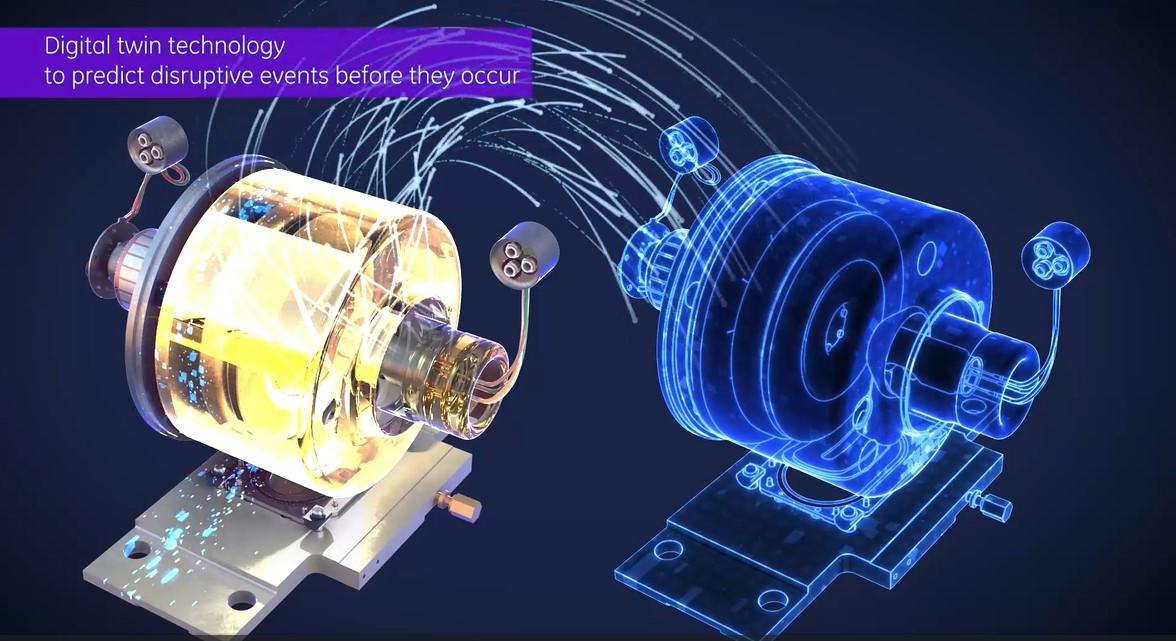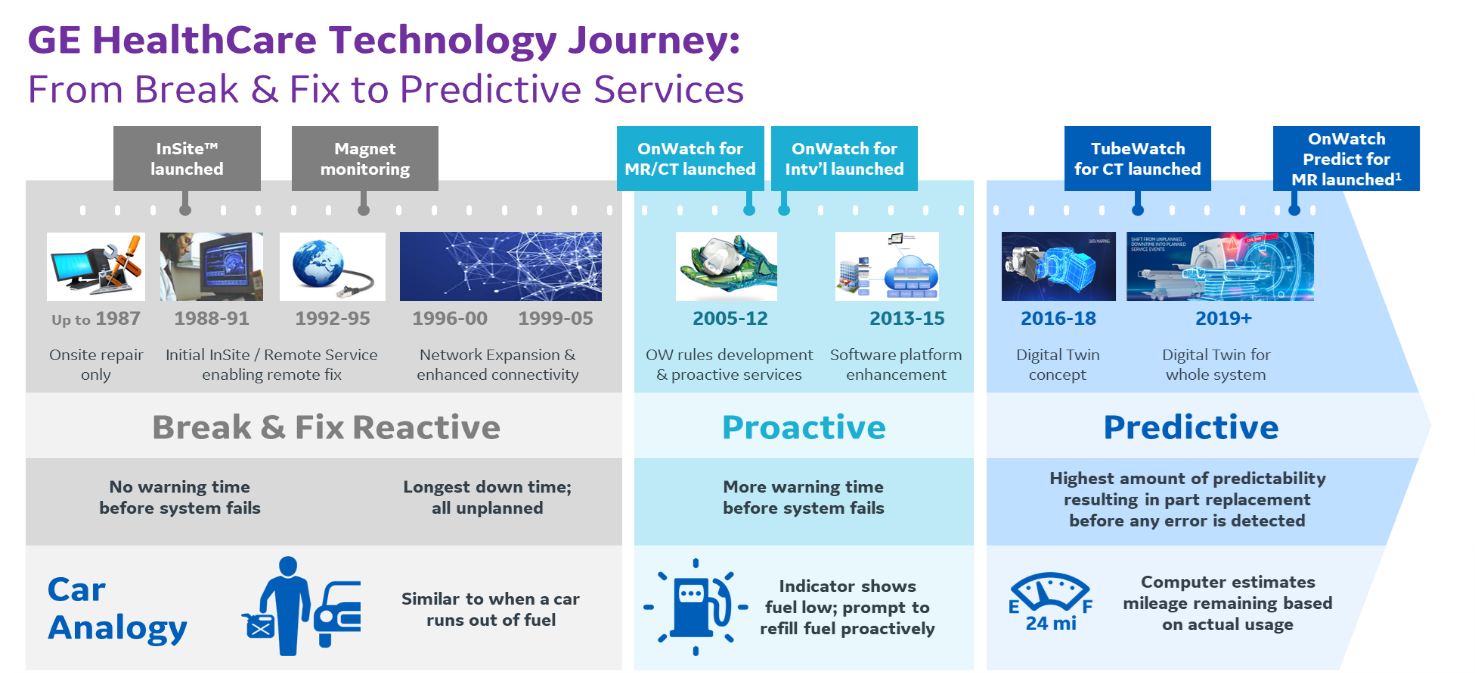Beyond Downtime: Redefining Predictive Medical Equipment Maintenance
The evolution of medical equipment maintenance has taken an innovative turn from the reactive break fix measures of the past to today’s AI driven predictive solutions. Envision a setting where advanced diagnostic equipment operates with seamless precision, its maintenance and performance needs anticipated by intelligent algorithms. This isn't just about sidestepping downtime; it's about leveraging predictive maintenance to help ensure the continuous delivery of patient care in healthcare environments.
Today, the high-value medical equipment makeup, the backbone of diagnostic accuracy is not just a line item on a balance sheet - it's a significant investment demanding protection. AI driven predictive maintenance extends beyond preserving operational continuity; it's about helping to expand the lifespan of these critical assets, safeguard investments, and contribute to the operational efficiency of healthcare facilities. This strategic approach helps to ensure that hospitals and clinics not only maximize their technology investment, but also maintain an uninterrupted, high quality patient care delivery system.
Marco Zavatarelli, who has served as a GE HealthCare technology services professional for more than three decades, has witnessed firsthand the transformative waves of change within the industry. His extensive experience spans a timeline of innovation, from the significant momentum of the 80s and 90s, where rapid advancements in service delivery began to fundamentally alter the landscape of healthcare, to the adoption of augmented reality in the 2010s. Today, the evolution continues, focusing sharply on AI-driven predictive maintenance, a leap forward that helps to significantly enhance the way healthcare providers manage and maintain their crucial equipment.
This advancement, as Zavatarelli puts it, allows for the accurate anticipation of equipment failures before they even hint at trouble. “We can head off problems that in the past would have led to unplanned downtime for our customers and potentially dangerous delays for their patients”, he explains.
Medical Equipment Maintenance
Medical equipment forms the backbone of modern healthcare, helping to enable swift diagnosis and effective treatments that help save lives daily. From essential tools like blood pressure monitors to highly complex machines such as MRI and CT scanners, each piece of equipment plays a vital role in the patient experience. Helping to ensure their optimal functionality isn't just about technical upkeep, it’s about maintaining the lifelines on which clinicians and patients depend, directly impacting healthcare workflows.
The Importance of Effective Medical Equipment Maintenance
Effective maintenance of medical equipment is critical to preserving these essential tools, and helps to ensure they operate efficiently and effectively. This diligence helps to support healthcare providers in delivering high-quality care and keeping operational costs in check while minimizing interruptions. The reliability of medical equipment is intertwined with the workflow of healthcare facilities; any disruption in equipment functionality can lead to delays and inaccuracies, which can affect the entire care delivery process.
Challenges of Reactive Maintenance
Traditionally, healthcare has relied on a reactive maintenance model, addressing equipment issues as they arise. This reactive approach, while seemingly straightforward, is fraught with significant drawbacks. When a diagnostic tool like an MRI scanner becomes unexpectedly unavailable, the consequences can be twofold: patient diagnosis can be delayed, and the healthcare facility may face substantial operational disruptions.
A stark illustration of the financial impact tied to this model comes from market research conducted by the business intelligence firm IMV. According to their findings, U.S. imaging sites, which on average conduct 380 MRI scans per month1, face a significant financial setback with just one day of unplanned MRI downtime. This can lead to the cancellation of 15 or more scans amounting to a loss exceeding $41,000 in direct and indirect revenues2.
However, the implications extend well beyond financial considerations. Every cancelled scan may denote a patient facing delays in receiving critical diagnostic services, which can have far-reaching effects.
The unpredictable nature of equipment failures, coupled with the high stakes of healthcare services, makes a compelling case for a shift towards more proactive and predictive maintenance strategies. Such an approach can not only mitigate the financial risks associated with equipment downtime but can also help to ensure the continuity and reliability of care delivery.
Nuances and Strategic Importance of Predictive Maintenance
Predictive maintenance is more than an evolution in healthcare technology maintenance; it’s an innovation that redefines the approach to equipment care. Distinct from the reactive model, which waits for equipment failure to occur, predictive maintenance utilizes advanced analytics, machine learning, and data from the equipment itself to help predict potential issues before they result in downtime. This strategic shift from reactive to a predictive approach represents a profound change in how healthcare facilities manage their most critical assets.
Predictive maintenance helps healthcare providers to move from costly, unplanned emergency repairs to a model that emphasizes efficiency, reliability, and foresight. The ability to anticipate and address equipment issues before they disrupt service helps to ensure that essential diagnostic tools are available when they're needed most. This proactive strategy can not only help enhance the patient experience by reducing equipment downtime, but it can also help to improve the operational efficiency of healthcare facilities, which can help lead to better resource allocation and cost savings.
Furthermore, predictive maintenance can contribute to the longevity of medical equipment. By identifying and resolving minor issues before they escalate, healthcare facilities can extend the useful life of their equipment, helping maximize the return on their significant investments in medical technology.
OnWatch Predict for MRI by GE HealthCare: Leading the Way in Predictive Maintenance
Down With Unplanned Downtime
GE HealthCare’s introduction of OnWatch Predict for MRI offers a pivotal advancement in medical equipment maintenance. This remarkable software suite represents excellence in predictive maintenance, showcasing what becomes possible at the intersection of AI aided data analytics and healthcare technology. By employing a sophisticated digital twin to mirror installed MRI machines in real time, OnWatch Predict exemplifies the innovative application of predictive analytics in helping to ensure equipment reliability and service excellence.
The digital twin concept, key to the system's effectiveness, continuously monitors each MRI machine’s critical components, allowing for the early detection of potential issues. Prompt identification of such concerns helps to facilitate the timely ordering of replacement parts and the scheduling of maintenance visits, thereby helping to minimize operational disruptions. This seamless integration of predictive maintenance into healthcare operations is inspired by cross disciplinary collaboration, drawing on the expertise of GE Aerospace engineers who have long harnessed predictive remote assistance to enhance the reliability of commercial airliners.
The tangible benefits of OnWatch Predict for MRI are underscored by its impressive impact on MRI uptime and maintenance efficiency. With its deployment across 1500 installations3 in the EMEA region, OnWatch Predict for MRI has made a measurable impact on the efficiency and reliability of MRI services. Specifically, in 2020, the system was instrumental in increasing MRI uptime by an average of ~2.5 days4 per year. This enhancement in operational performance not only underscores the system’s effectiveness and minimization of unplanned downtime, but also demonstrates its capacity to streamline service requests by accurately forecasting component failures. OnWatch Predict for MRI has reduced unplanned downtime by up to 60%4 and cut down on customer-initiated service requests which are often sources of stress for hospital imaging staff by as much as 35%4.
Building on the foundational advantages of predictive maintenance, OnWatch Predict for MRI exemplifies the technology’s application in a focused, impactful way. Jean Michel Gard, GE HealthCare Global Services Senior Product Manager, highlights the specificity of the solution: “Whether the problem is unwanted gantry movement, degraded signal to noise ratios, or any of a hundred more issues that can arise as machines age, OnWatch Predict for MRI lets us keep our customers’ MRI machine up and running without interruption.”
This precision in addressing potential problems before they affect patient experience offers a meaningful improvement in medical equipment service.
Stefania Catacchio, GE HealthCare Global Services Growth Director, elaborates on the broader impact: “OnWatch Predict’s promise to gradually transform service for all advanced imaging modalities – computer tomography, nuclear medicine, ultrasound and perhaps digital radiography – represents a win-win for patients, physicians and our hospital customers.” The adoption of OnWatch Predict not only helps to enhance the reliability of MRI machines but also sets the stage for its application across a range of diagnostic equipment, underscoring the scalable benefits of predictive maintenance.
- Source: IMV study conducted in 2020, reporting an average of 380 exams per month in the United States.
- The number of cancelled examinations is based on the average utilization of systems across USCAN and EMEA over the past 12 rolling months (source: SvcSuite). The estimated direct and indirect revenue loss is based on missed examinations, overtime wages, and idle time. Indirect labor costs are sourced from Salary.com, and MR examination revenue estimates are sourced from “MRI Costs” on Imaging Technology News.
- Source: Rule Studio. Number of systems benefiting from an OnWatch Predict rule set enabled.
- Study conducted in 2020 on 262 systems, segmented into two groups: 228 systems under break-and-fix service delivery and 34 pilot sites using OnWatch Predict services. Data was collected over a 6-month period and extrapolated to a full year. Average downtime was calculated based on 24/7 operations. As each hospital is unique, results may vary. GE HealthCare does not guarantee the outcomes presented.



